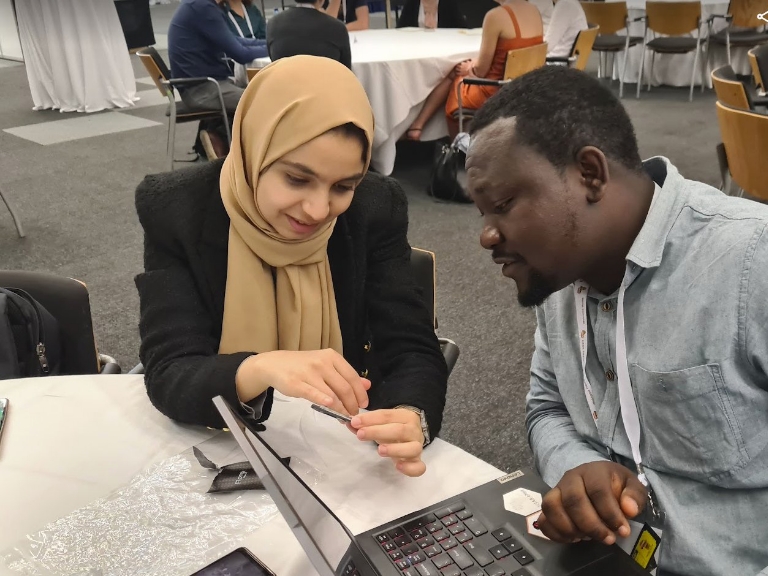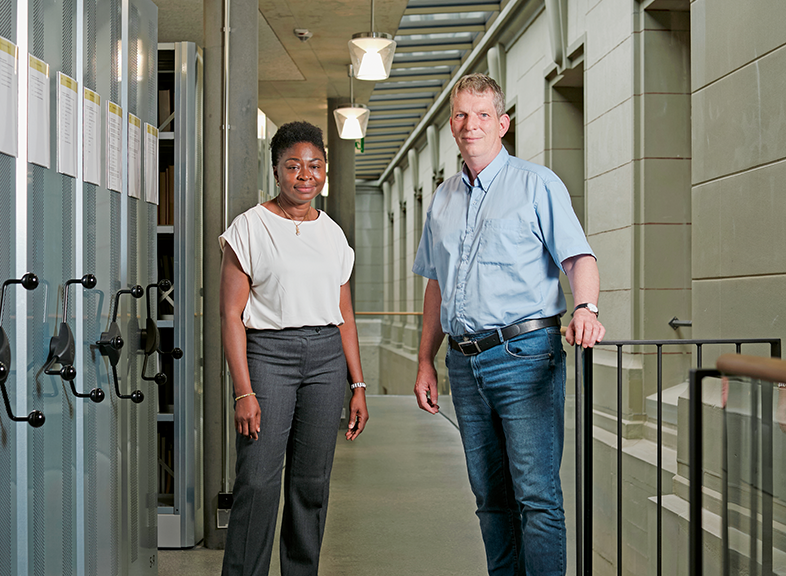Research collaboration
Protecting land and water in Ethiopia
Drought and heavy rainfall are threatening livelihoods in the Ethiopian highlands. Since 1981, researchers from Bern and Ethiopia have been working with the local population to develop solutions. The approach is now being extended to other regions as part of a “Cluster for Research Excellence”.
They once made up the wealth of Egypt. Today they have become a challenge: the water and the mud of the Blue Nile. Water is often scarce on the Blue Nile – or falls as torrential rain during the rainy season. Between June and September, the river, which rises in the highlands of Ethiopia, carries up to 60 times as much water as during the dry season.
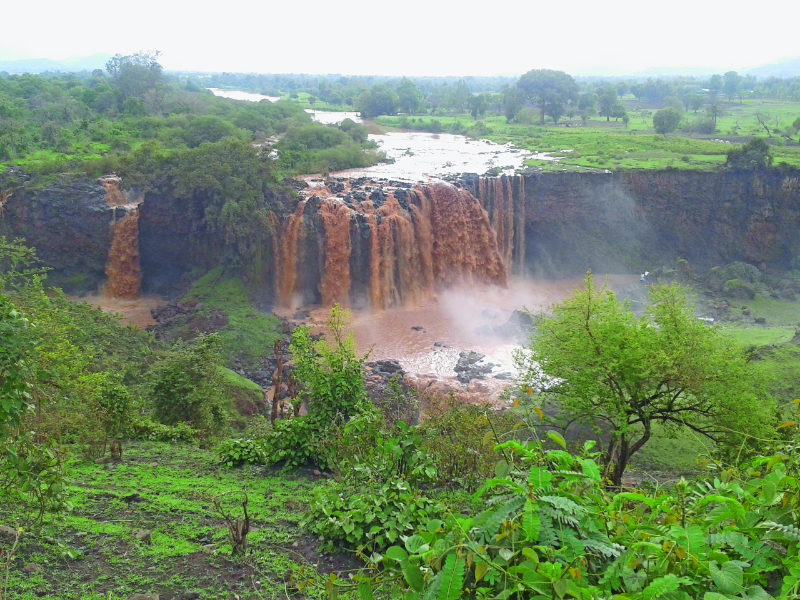
Erosion – the downward spiral
The measurement data from researchers at the Centre for Development and Environment (CDE) and the Water and Land Resources Centre (WLRC) from 2016 shows what this means: “For example, we measured that more than 100,000 tonnes of soil were washed into the river in one year in a drainage area measuring around 5,000 hectares,” says CDE scientist Tatenda Lemann, who was still a doctoral student at the University of Bern at the time. That’s the equivalent of around 2,500 trucks full of earth. “On average, that’s more than 20 tonnes per hectare, which is even more on individual fields,” says Lemann.
The result of erosion during the rainy season is particularly visible at Africa’s second-largest waterfalls: Tisissat (“smoking water”). Here, the Blue Nile plunges 42 meters into the depths and drains the topmost, nutrient-rich layer of soil.
Subscribe to the uniAKTUELL newsletter

Discover stories about the research at the University of Bern and the people behind it.
This massive sediment load during the rainy season not only endangers hydroelectric power plants and dams on the lower reaches. Soil erosion also reduces crop yields in the upper reaches of the Blue Nile. This in turn leads to an expansion of agricultural land at the expense of ecologically valuable forests, grasslands and unique wetlands. A vicious circle that repeatedly leads to conflicts between different ethnic groups, but also with neighboring countries.
Innovations – step by step
But there are other possibilities. This is demonstrated by the results of a long-standing research partnership between Switzerland and Ethiopia. Since 1981, CDE scientists have been working with Ethiopian partners to gradually bring locally adapted and sustainable innovations to the field.
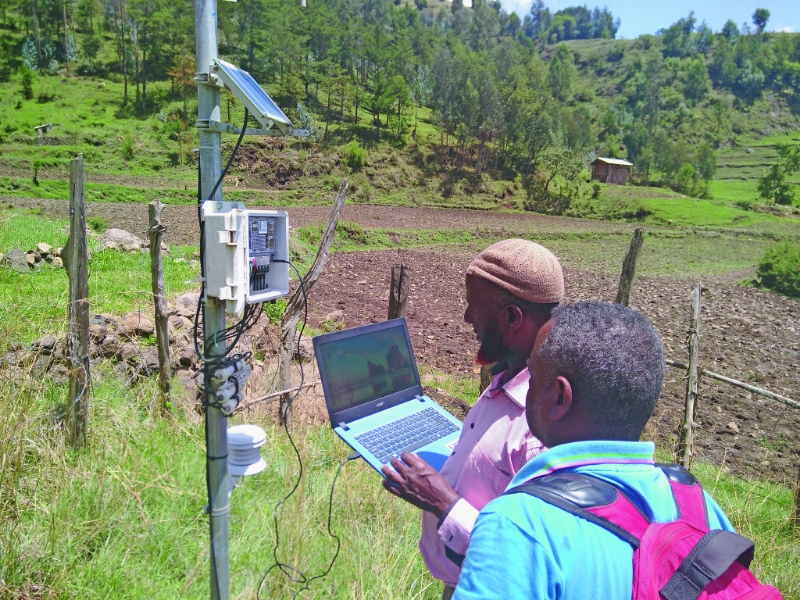
After setting up a meteorological and hydrosedimentological monitoring system, the data – supplemented with geodata and socio-economic information – was processed and continuously updated. This data package has been open to interested parties as an online platform since 2013, supplemented by information products(see box).
“It was also important that we engaged the key stakeholders and turned them into active participants: farming families, local community organizations, agricultural advisors, researchers and policy makers,” says WLRC Director Gete Zeleke, looking back. Many forward-looking ideas and suggestions have emerged from the regular exchange of experiences. New land and water management practices were introduced, combined with local traditional knowledge and 18 learning watersheds were established. The aim is to diversify the livelihoods of the population while at the same time ensuring healthy ecosystems.
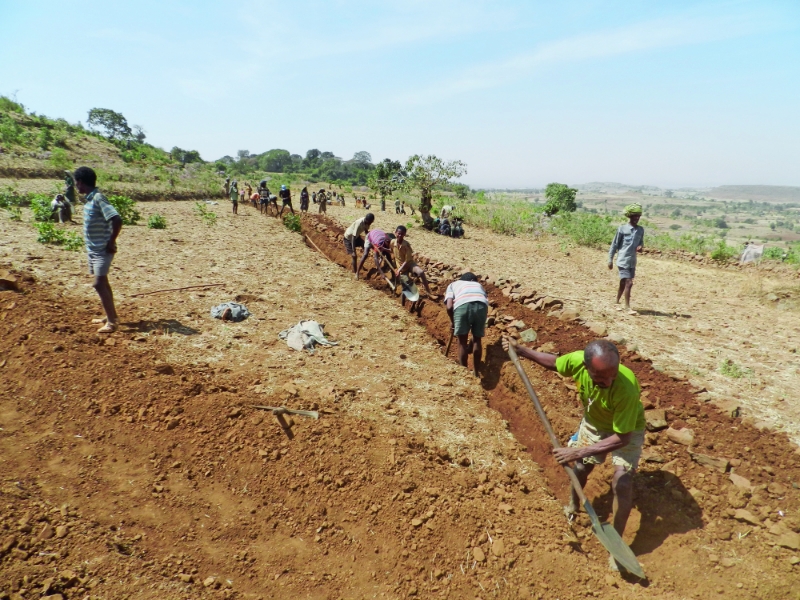
Learning watersheds – the key building block
According to Gete Zeleke, these knowledge and training centers have proven to be the key for the success of this approach: “In the learning watersheds, we test best practices for conserving natural resources and agricultural production and improving livelihoods.” The knowledge gained in this way is disseminated and incorporated into negotiations, planning processes, implementation and conflict resolution.
The learning watersheds illustrate how soil erosion can be reduced and soils rehabilitated. For example, in the center of Debre Yakob. Within three years, the land formerly marked by deep erosion ditches and degraded slopes was restored here.
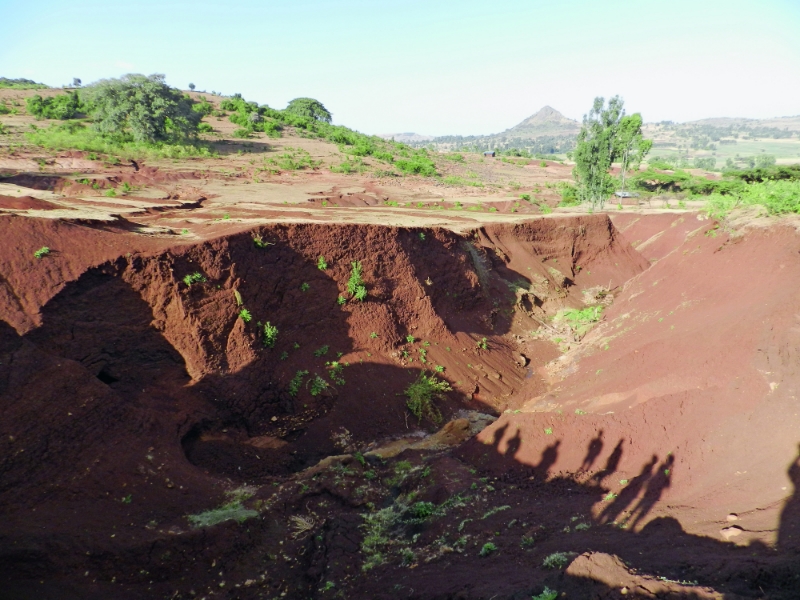
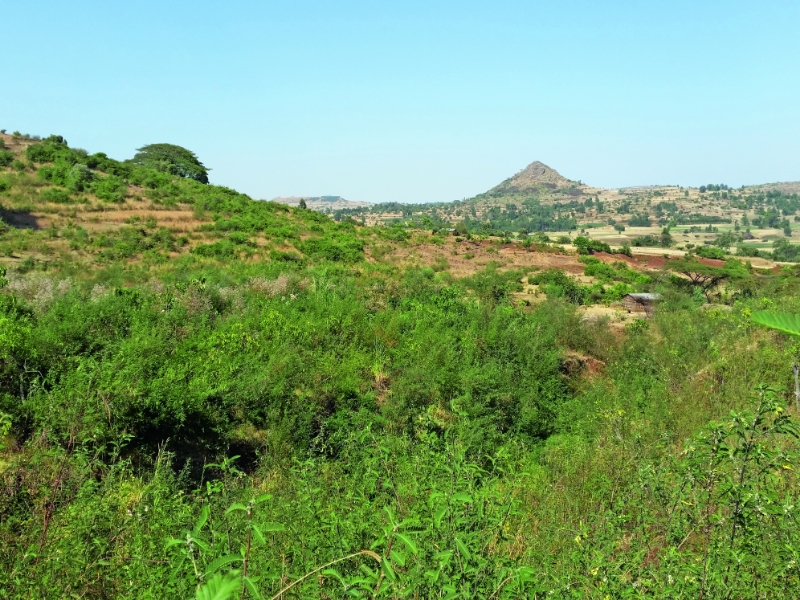
Diversified agriculture – new perspectives
Soil, the environment and the availability of water are once again balanced in the learning watersheds. This has opened up new prospects for the population, most of whom depend on traditional subsistence farming. “If the drainage area is properly managed, farming families can not only increase yields on their land, but also diversify agricultural products,” explains CDE researcher Isabelle Providoli.
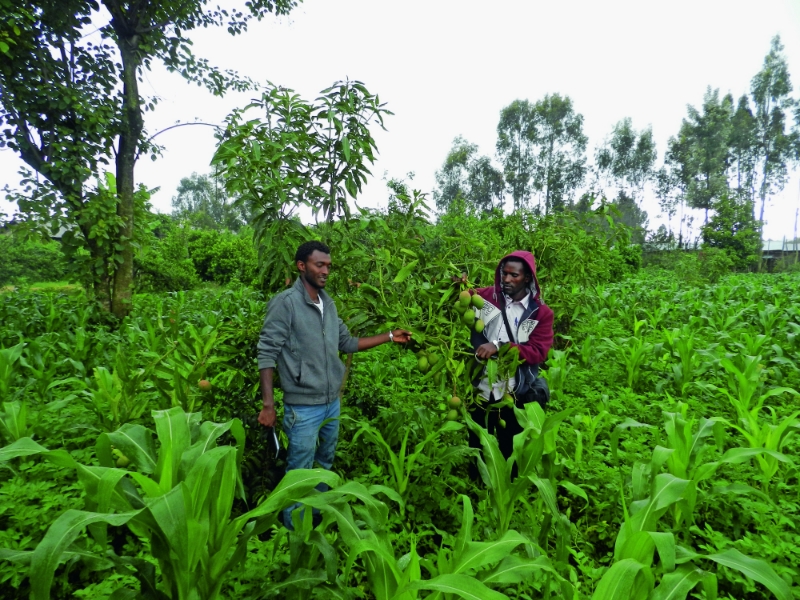
International interest
Knowledge of how to improve the situation in the Ethiopian highlands has spread. Hundreds of students, academics and people from industry have now been trained and educated accordingly.
International donors such as the UN World Food Programme, the World Bank, the EU, the national development cooperation of Switzerland, Norway, the Netherlands and Germany as well as other players have also shown interest and invested in the undertaking. The result: By 2019, soil and water conservation measures had covered around 7.7 million hectares in the Ethiopian highlands, around 23% of the soils that need to be restored there.
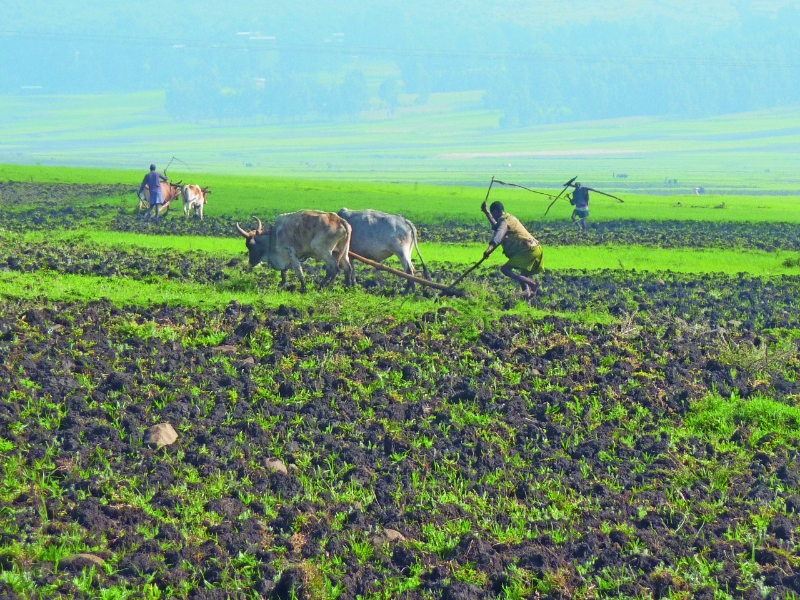
Challenges remain complex
But even if the entire area were rehabilitated, the story is not over. “It’s a lesson we’ve learned over the years when it comes to water and land management: It doesn’t stop,” says Gete Zeleke. “More and more complex and interrelated challenges are emerging all the time for which we need sustainable solutions.” An example of this is the expansion of cities into surrounding agricultural land. This requires new approaches to research and solutions.
This is where the new multinational research cluster “Sustainable Water and Land Resource Management for Human Well-Being” comes in, selected last year by the African Research Universities Alliance (ARUA) and The Guild of European Research-Intensive Universities (The Guild) as one of 20 Clusters of Excellence. It builds on the successes of 40 years of collaboration: “We want to further develop the experiences of the learning watersheds and, together with our international partners, adapt and expand them to different countries, landscapes, cultures and institutional systems,” says CDE Director Thomas Breu.
Water and land: key challenges for humanity
According to Breu, the sustainable use of land and water as well as the long-term preservation of ecosystems and landscapes in conjunction with the effects of climate change have become one of the key challenges facing humankind: “Today, up to 40% of the world’s soil is degraded.” In addition, by 2030, around half of the world’s population will live in water-scarce areas. “We need to address these challenges with the right mix of traditional and scientific knowledge if we are to have a future worth living – in Africa, Europe and elsewhere.”
Event information
Collegium generale
The diversity of Africa is the focus of the lecture series of the Collegium generale in the fall semester of 2024. Of the 14 public lectures, two deal with sustainable resource management:
October 9
Title still to be decided
Prof. Dr. Chinwe Ifejika Speranza, Geography, University of Bern, Switzerland
December 18
The drama of the looted African commons:
colonial legacies, degradation of cultural landscapes and local alternatives
Prof. Dr. Tobias Haller, Social Anthropology; Centre for Development and
Environment, University of Bern, Switzerland
The full program and event details can be found at
Magazine uniFOKUS
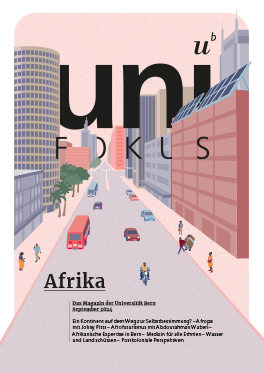
Africa
This article first appeared in uniFOKUS, the University of Bern print magazine. Four times a year, uniFOKUS focuses on one specialist area from different points of view. Current focus topic: Africa
Subscribe to uniFOKUS magazine